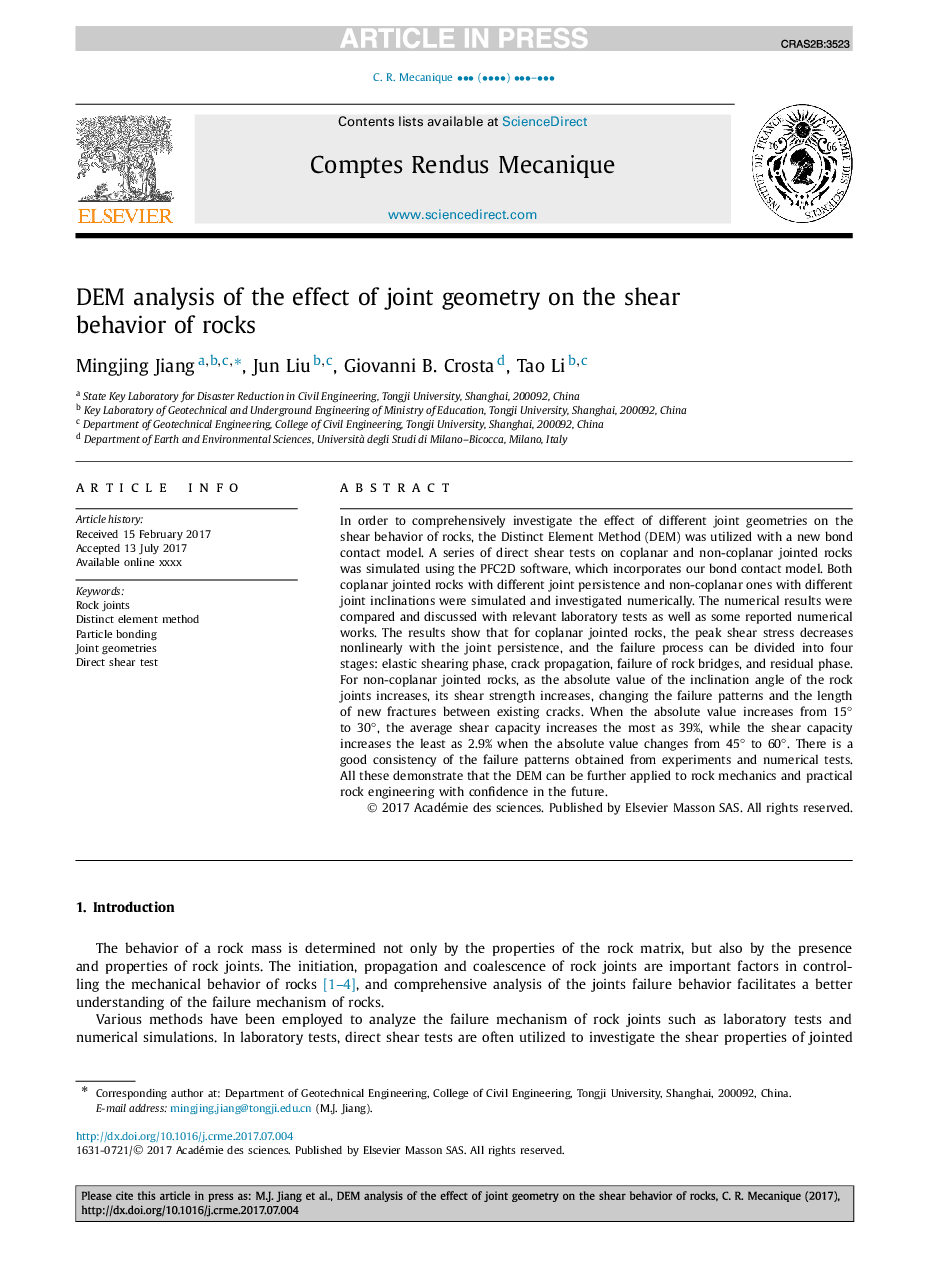| Article ID | Journal | Published Year | Pages | File Type |
|---|---|---|---|---|
| 5022455 | Comptes Rendus Mécanique | 2017 | 18 Pages |
Abstract
In order to comprehensively investigate the effect of different joint geometries on the shear behavior of rocks, the Distinct Element Method (DEM) was utilized with a new bond contact model. A series of direct shear tests on coplanar and non-coplanar jointed rocks was simulated using the PFC2D software, which incorporates our bond contact model. Both coplanar jointed rocks with different joint persistence and non-coplanar ones with different joint inclinations were simulated and investigated numerically. The numerical results were compared and discussed with relevant laboratory tests as well as some reported numerical works. The results show that for coplanar jointed rocks, the peak shear stress decreases nonlinearly with the joint persistence, and the failure process can be divided into four stages: elastic shearing phase, crack propagation, failure of rock bridges, and residual phase. For non-coplanar jointed rocks, as the absolute value of the inclination angle of the rock joints increases, its shear strength increases, changing the failure patterns and the length of new fractures between existing cracks. When the absolute value increases from 15° to 30°, the average shear capacity increases the most as 39%, while the shear capacity increases the least as 2.9% when the absolute value changes from 45° to 60°. There is a good consistency of the failure patterns obtained from experiments and numerical tests. All these demonstrate that the DEM can be further applied to rock mechanics and practical rock engineering with confidence in the future.
Related Topics
Physical Sciences and Engineering
Engineering
Engineering (General)
Authors
Mingjing Jiang, Jun Liu, Giovanni B. Crosta, Tao Li,
